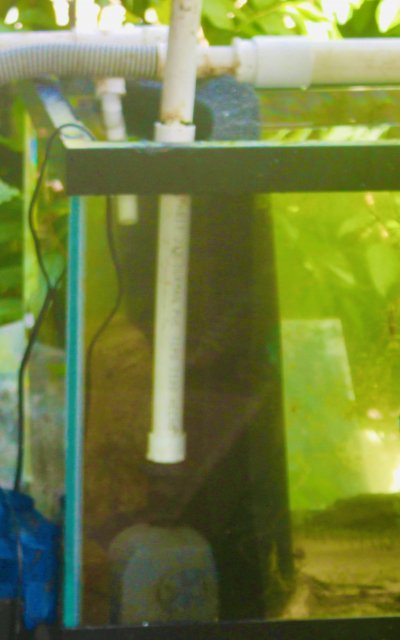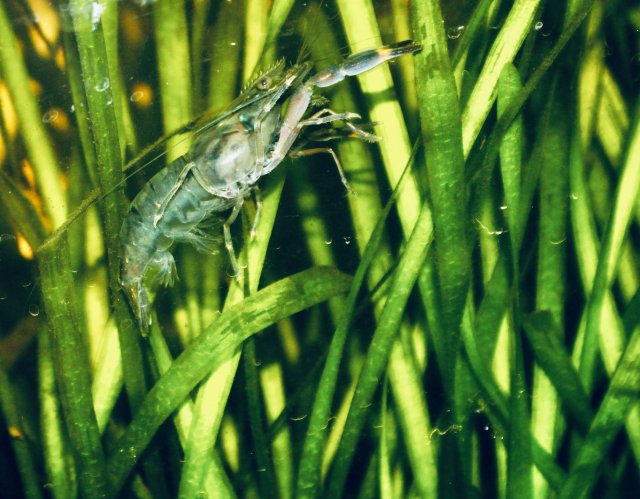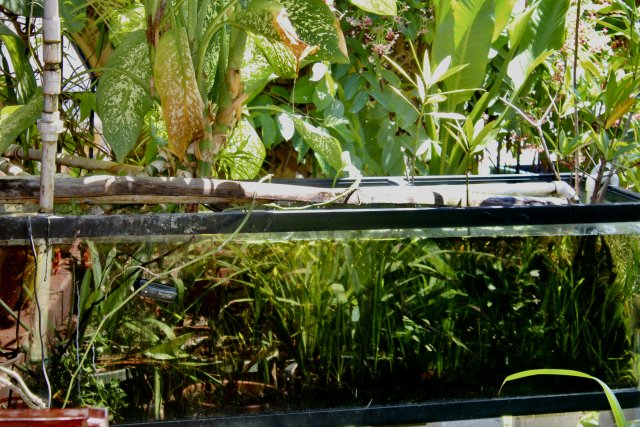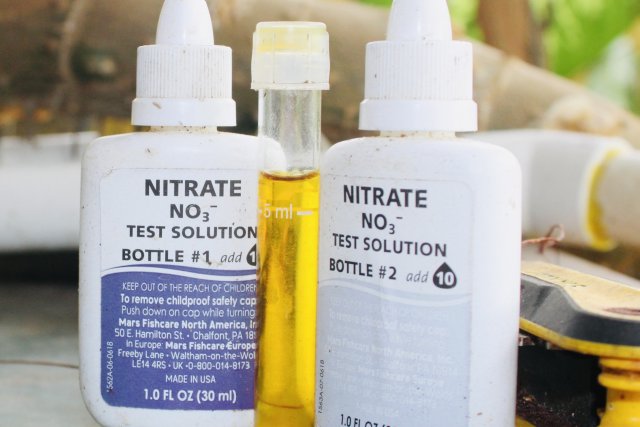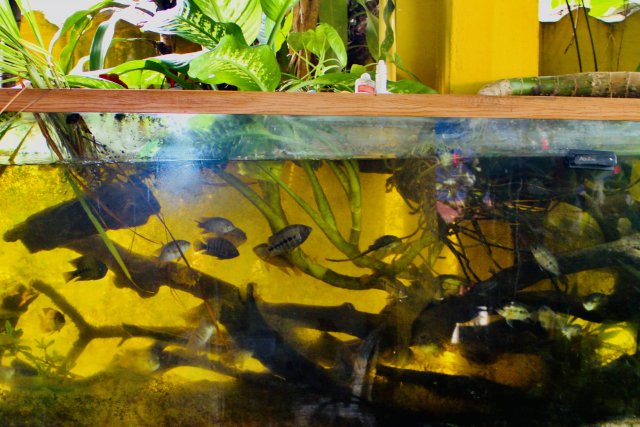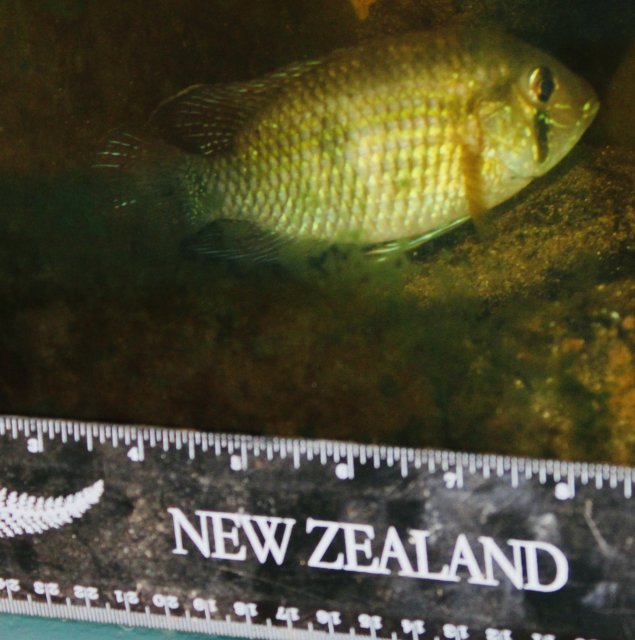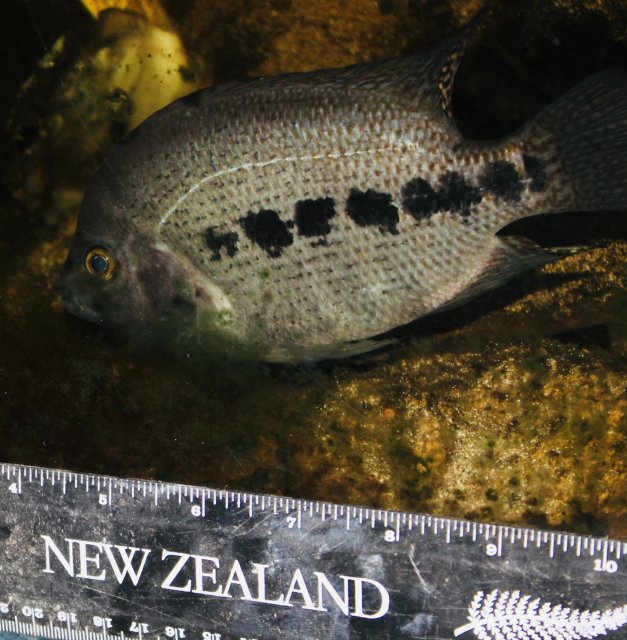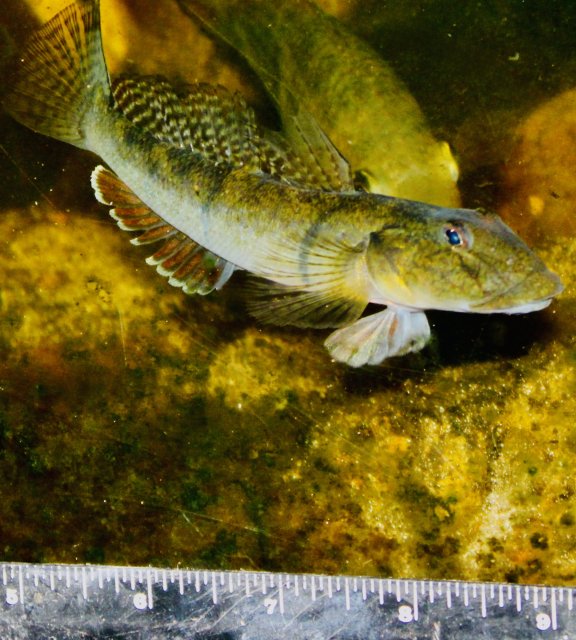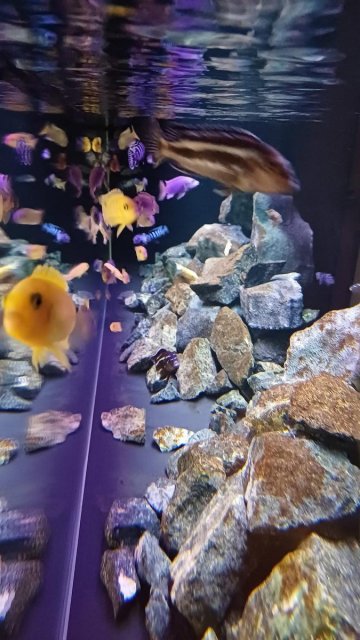There’s been some solid splurges at my house. But I’m laying them out one at a time…
I just ordered a 60” x 30” @ 24” tall, 195 gallon aquarium from Glass Cages (!!!)
I’ll be building a stand for it. Eventually a canopy too.
It will be themed as a Discus tank, but I want a variety of species in it. Though other species that will work well with Discus. We’ll talk stocking elsewhere later.
But the Sump! Which will also be a Refugium!!! Diagram attached. (top pic is front view, bottom pic is top view. ignore bottom pic...)
__________
I have an old 90 Gallon (4’ x 1.5’ @ 2’ tall) that I bought in 2001 and it was old then. I dismantled it and resealed it around 2008. It’s an ugly silicone job but it holds water just fine. This will be the sump.
I don’t want to silicone baffles in it, as that’s a little too permanent. So I’m going to build boxes for each end that have baffles in the boxes. These boxes will be made of Concrete Board sealed with DryLock.
I looked at HardiBoard today at Lowes and it looked cheap. More like a ½ thick sheet of paper than a concrete like product. I have 2 sheets of HardiBoard that’s several years old and it’s much more concrete like, but it’s in use. Also, I have a sheet of the actual Cement Board with the rounded edges. I started cutting it to make the boxes today.
What do you think about making a structure out of this that will be permanently submerged?
It will be submerged in a sealed aquarium, so there won’t be any significant pressure on the seals. If the seals do leak it won't matter at all. My concern is will it disintegrate over a year or three.
_________
There will basically be a 10” baffle insert on each end and 28” of refugium in the middle.
__________
To the left:
Check out the Diagram below and I’ll walk ya through the plan. Vertical pipes is the dirty water coming in. The diagram isn’t exact right there as the pipes drop the water into a 4”x4” chamber in the back that spills forward into the 4”x14” chamber in front of it. But anyway… Fist stage of filtration (gold color) are a couple Aqua Clear 110/500 sponges cut to fit. I’ll also use some basic filter fabric on top just because it’s super easy to clean/replace. Under that and under the first baffle (pink color) will be Bio-Rings and Pot Scrubbies. Honestly, I plan to just through in whatever I have laying around to fill the space with something productive. After that the water is released into the Refugium…
__________
Refugium… 28” x 18”...
Have you seen the videos of that old codger that calls himself Father Fish? I’m not promoting the guy or trying to discuss his claims. He’s out there, but… I used his idea of 3-4” of topsoil capped with 2-3” of sand. I have it in two planted tanks and Java Fern is doing amazing in both, and I’ve killed Java Fern in my sand bottom tanks with the same lighting for years. So… I want to do that for substrate… But… The point of a Refugium isn’t to grow plants, it’s to host plants that clean the water. If the plants are feasting on soil nutrients will they eat less water bound nutrients? The planted tanks I have with soil in them have near zero nitrates regardless of my water change schedule (or lack there of). Whatcha think?
I plant to put a few Java Ferns in it, Hornwart floating in the top and Pothos through the refugium and wheverelse it grows. I have a bunch of Wandering Jew (that’s what it’s called, I’m not being racist) I’ll likely add too. Basically a random variety of whatever hardy fast growing plants I come up with.
Oh, it’ll have scuds too. At this point all my tanks have them whether I like it or not. I’ve tried sooo hard to keep them out of new set ups and usually within 2 months, they’re there. I don’t mind them though.
Input on the Refugium?
__________
The right Chamber…
The baffle structure will almost mirror the left, except where the left has the receiving chamber in the back, this one will have a pump shelf in the back. We’ll talk pumps & flow rates in a minute.
On top of the yellow/tank stuff on the refugium side I’ll need to put filter fabric. And the yellow/tan stuff is Pool Filter Sand. I’m a little skeptical of this, but I want to try it. Letting the water do a slow flow through pure sand as a filtration. I mean, it is “Pool Filter Sand”. But in traditional sand filters they are a pressurized system, and this isn’t. Thus my skepticism.
On top of the Pool FIlter Sand and throughout the pump chamber will be quilt batting, to act as a water polisher and to keep the sand out of the pump(s).
I found a chart on a Geotechnical Engineering website (I’m a Geotechnical Engineer, no it wasn’t my website) that offered flow rates of water through a pure sand. If they are right and my math was right, my design will allow 420 gallons per hour to flow through the chamber.
Thoughts on anything in this chamber?
Note 1: If I set it up and the sand limits the flow rate too much -or- the sand get blown into the upper pump chamber… I’ll get rid of the sand and stagger AC110/500 sponges and quilt batting. But I’ve got to try it…
Note 2: Not shown in the diagram but, I can lower the top wall between the refugium and the pump so if the sand slows the water down it will bypass the sand chamber and go straight to the pump which will be packed in quilt batting. The water should be pretty darn clean at that stage, other than the plant matter it picks up in the refugium.
__________
Flow Rates
Note: I’m assuming a working volume of 80 gallons on the sump…
Since the sand will theoretically only allow 420 gph… which is turning the sumps volume over 5.25x per hour… let’s go with that. Which I think will be a good flow rate for the refugium. And yes I know a 420 gph pump won’t move 420 gph. I’ll use a slightly larger magnetic driven pump than I need and throttle it back with a valve to the desired flow.
A true 420 gph will be…
5.25x turnover of the sump’s volume…
2.15x turnover of the aquarium’s volume…
1.5x turnover of the total system’s volume…
__________
Clearly that’s not going to be enough total filtration on the tank. I have a plan to build a combo concrete cave / filter insert thingy to move water across the floor and collect it into a sponge chamber. I’ll build that in secret and if it works, I’ll make a post bragging about how brilliant I am. If it doesn’t work, you’ll never hear me mention it again.
__________
UV
Does anyone use UV anymore? Since it’s a Discus tank and they are super delicate, and love crystal clear water, maybe? I used them in the past breeding Electric Blue Jack Dempseys which are prone to parasitic infections. I’m convinced it gave me a significant advantage getting them past the most delicate stage. I also used to run a Magnum 250 Hang on Tank Canister filter with a polishing cartridge pushing water through a Turbo Twist 18W UV. The two together made a damn good improvement to having crystal clear water.
__________
I’m sure I’m forgetting stuff, but it’s late and this is already too long.
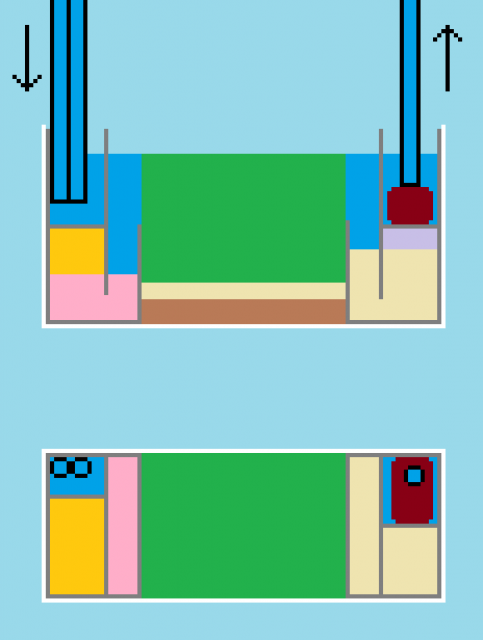
I just ordered a 60” x 30” @ 24” tall, 195 gallon aquarium from Glass Cages (!!!)
I’ll be building a stand for it. Eventually a canopy too.
It will be themed as a Discus tank, but I want a variety of species in it. Though other species that will work well with Discus. We’ll talk stocking elsewhere later.
But the Sump! Which will also be a Refugium!!! Diagram attached. (top pic is front view, bottom pic is top view. ignore bottom pic...)
__________
I have an old 90 Gallon (4’ x 1.5’ @ 2’ tall) that I bought in 2001 and it was old then. I dismantled it and resealed it around 2008. It’s an ugly silicone job but it holds water just fine. This will be the sump.
I don’t want to silicone baffles in it, as that’s a little too permanent. So I’m going to build boxes for each end that have baffles in the boxes. These boxes will be made of Concrete Board sealed with DryLock.
I looked at HardiBoard today at Lowes and it looked cheap. More like a ½ thick sheet of paper than a concrete like product. I have 2 sheets of HardiBoard that’s several years old and it’s much more concrete like, but it’s in use. Also, I have a sheet of the actual Cement Board with the rounded edges. I started cutting it to make the boxes today.
What do you think about making a structure out of this that will be permanently submerged?
It will be submerged in a sealed aquarium, so there won’t be any significant pressure on the seals. If the seals do leak it won't matter at all. My concern is will it disintegrate over a year or three.
_________
There will basically be a 10” baffle insert on each end and 28” of refugium in the middle.
__________
To the left:
Check out the Diagram below and I’ll walk ya through the plan. Vertical pipes is the dirty water coming in. The diagram isn’t exact right there as the pipes drop the water into a 4”x4” chamber in the back that spills forward into the 4”x14” chamber in front of it. But anyway… Fist stage of filtration (gold color) are a couple Aqua Clear 110/500 sponges cut to fit. I’ll also use some basic filter fabric on top just because it’s super easy to clean/replace. Under that and under the first baffle (pink color) will be Bio-Rings and Pot Scrubbies. Honestly, I plan to just through in whatever I have laying around to fill the space with something productive. After that the water is released into the Refugium…
__________
Refugium… 28” x 18”...
Have you seen the videos of that old codger that calls himself Father Fish? I’m not promoting the guy or trying to discuss his claims. He’s out there, but… I used his idea of 3-4” of topsoil capped with 2-3” of sand. I have it in two planted tanks and Java Fern is doing amazing in both, and I’ve killed Java Fern in my sand bottom tanks with the same lighting for years. So… I want to do that for substrate… But… The point of a Refugium isn’t to grow plants, it’s to host plants that clean the water. If the plants are feasting on soil nutrients will they eat less water bound nutrients? The planted tanks I have with soil in them have near zero nitrates regardless of my water change schedule (or lack there of). Whatcha think?
I plant to put a few Java Ferns in it, Hornwart floating in the top and Pothos through the refugium and wheverelse it grows. I have a bunch of Wandering Jew (that’s what it’s called, I’m not being racist) I’ll likely add too. Basically a random variety of whatever hardy fast growing plants I come up with.
Oh, it’ll have scuds too. At this point all my tanks have them whether I like it or not. I’ve tried sooo hard to keep them out of new set ups and usually within 2 months, they’re there. I don’t mind them though.
Input on the Refugium?
__________
The right Chamber…
The baffle structure will almost mirror the left, except where the left has the receiving chamber in the back, this one will have a pump shelf in the back. We’ll talk pumps & flow rates in a minute.
On top of the yellow/tank stuff on the refugium side I’ll need to put filter fabric. And the yellow/tan stuff is Pool Filter Sand. I’m a little skeptical of this, but I want to try it. Letting the water do a slow flow through pure sand as a filtration. I mean, it is “Pool Filter Sand”. But in traditional sand filters they are a pressurized system, and this isn’t. Thus my skepticism.
On top of the Pool FIlter Sand and throughout the pump chamber will be quilt batting, to act as a water polisher and to keep the sand out of the pump(s).
I found a chart on a Geotechnical Engineering website (I’m a Geotechnical Engineer, no it wasn’t my website) that offered flow rates of water through a pure sand. If they are right and my math was right, my design will allow 420 gallons per hour to flow through the chamber.
Thoughts on anything in this chamber?
Note 1: If I set it up and the sand limits the flow rate too much -or- the sand get blown into the upper pump chamber… I’ll get rid of the sand and stagger AC110/500 sponges and quilt batting. But I’ve got to try it…
Note 2: Not shown in the diagram but, I can lower the top wall between the refugium and the pump so if the sand slows the water down it will bypass the sand chamber and go straight to the pump which will be packed in quilt batting. The water should be pretty darn clean at that stage, other than the plant matter it picks up in the refugium.
__________
Flow Rates
Note: I’m assuming a working volume of 80 gallons on the sump…
Since the sand will theoretically only allow 420 gph… which is turning the sumps volume over 5.25x per hour… let’s go with that. Which I think will be a good flow rate for the refugium. And yes I know a 420 gph pump won’t move 420 gph. I’ll use a slightly larger magnetic driven pump than I need and throttle it back with a valve to the desired flow.
A true 420 gph will be…
5.25x turnover of the sump’s volume…
2.15x turnover of the aquarium’s volume…
1.5x turnover of the total system’s volume…
__________
Clearly that’s not going to be enough total filtration on the tank. I have a plan to build a combo concrete cave / filter insert thingy to move water across the floor and collect it into a sponge chamber. I’ll build that in secret and if it works, I’ll make a post bragging about how brilliant I am. If it doesn’t work, you’ll never hear me mention it again.
__________
UV
Does anyone use UV anymore? Since it’s a Discus tank and they are super delicate, and love crystal clear water, maybe? I used them in the past breeding Electric Blue Jack Dempseys which are prone to parasitic infections. I’m convinced it gave me a significant advantage getting them past the most delicate stage. I also used to run a Magnum 250 Hang on Tank Canister filter with a polishing cartridge pushing water through a Turbo Twist 18W UV. The two together made a damn good improvement to having crystal clear water.
__________
I’m sure I’m forgetting stuff, but it’s late and this is already too long.




